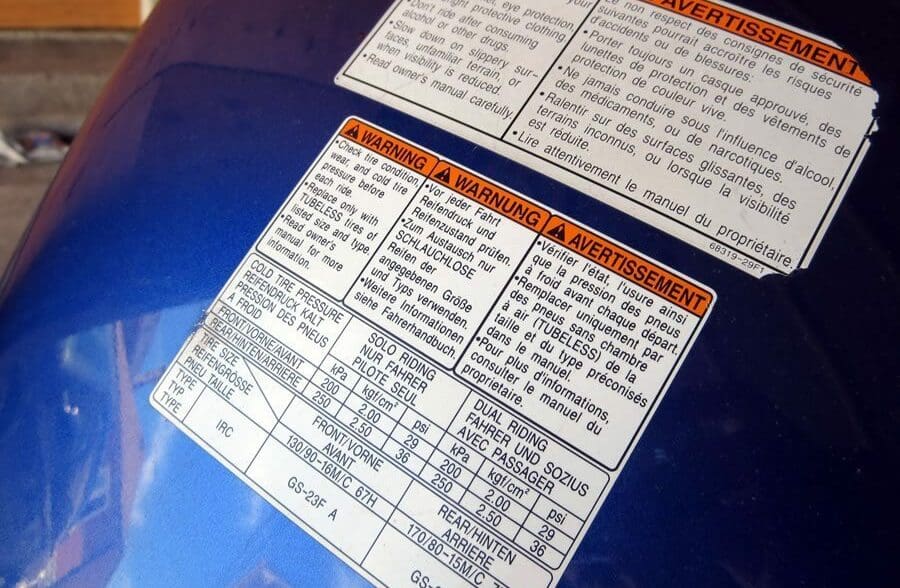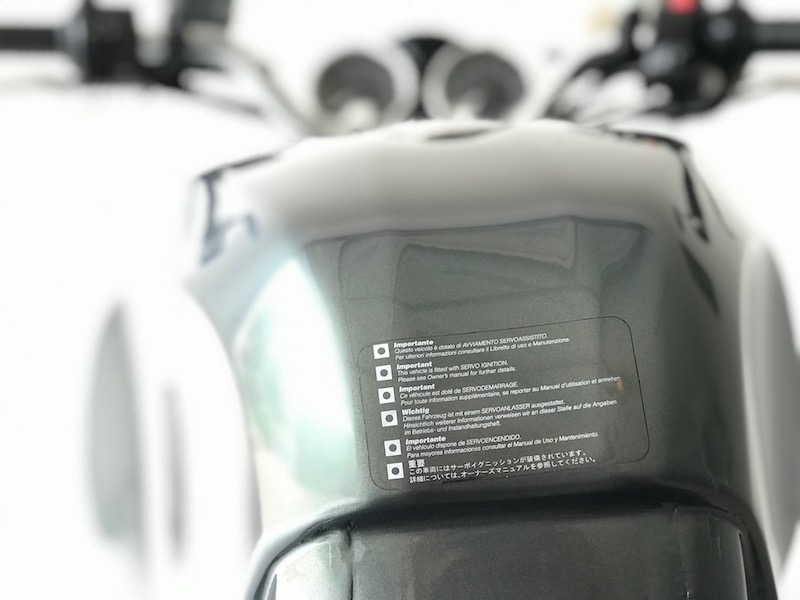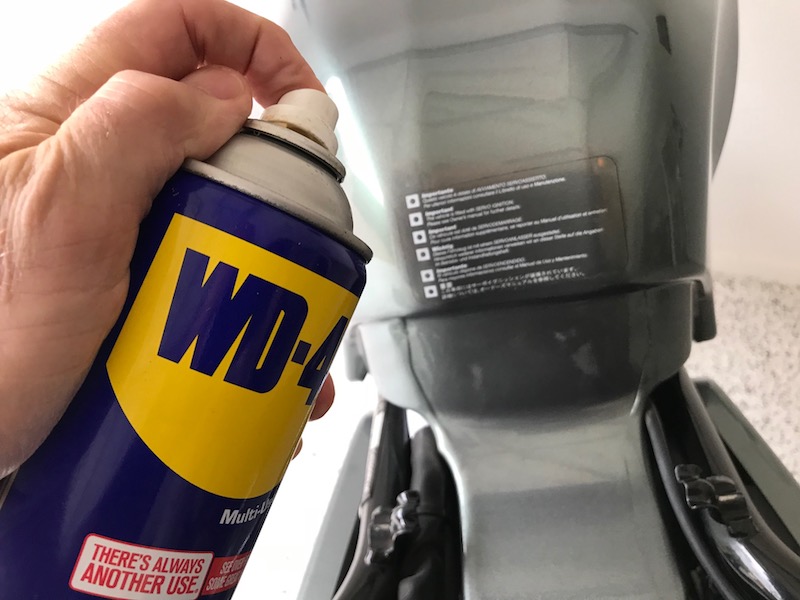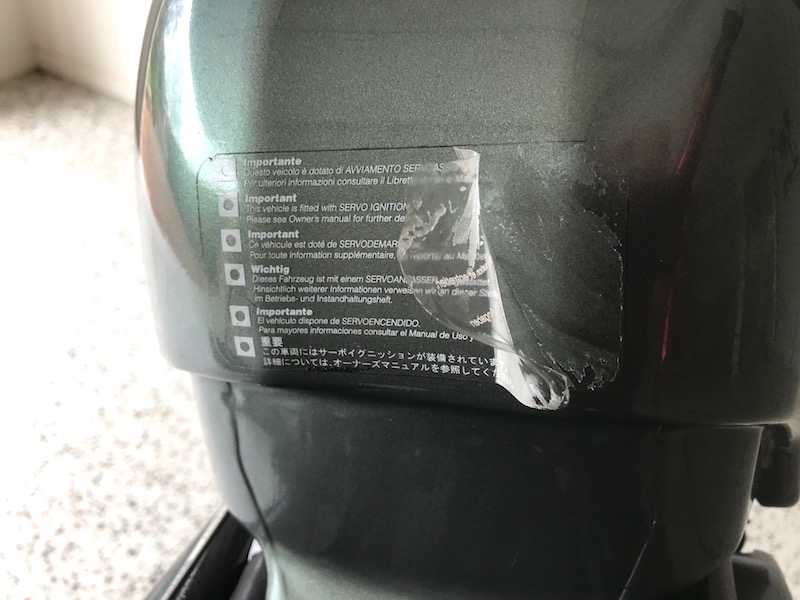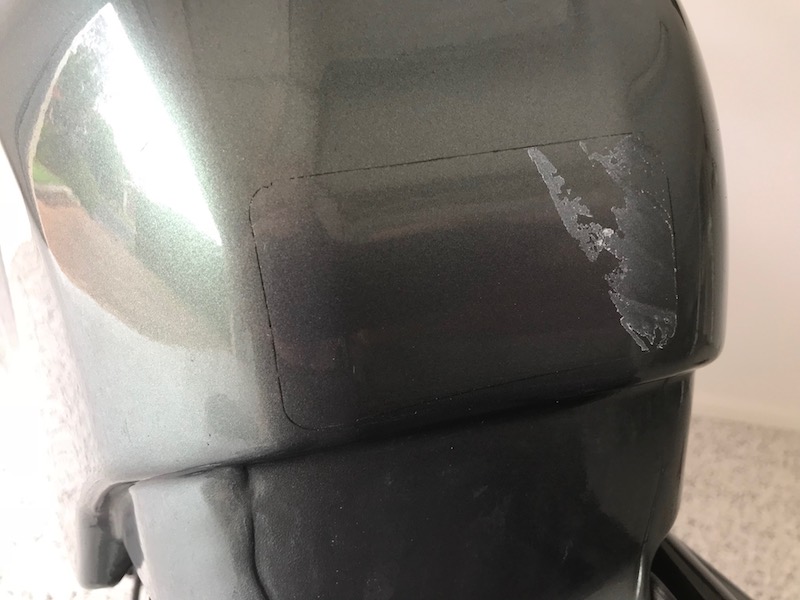Does your motorcycle have warning stickers or decals on the fuel tank advising you to read the manual, never ride drunk, always wear a helmet or use premium fuel?
Many riders believe these decals are meant to be retained or are lacquered over and can’t be removed.
However, they are only warning stickers and are designed to be removed. Some are made of paper and some are vinyl.
I recently bought an 11-year-old Ducati GT1000 that surprisingly still had a warning decal on the tank.
It advises the owner that the bike is fitted with servo ignition and you should read the owner’s manual for further details.
(Servo ignition means you just hit the ignition switch briefly with no throttle and it automatically starts the bike, even when it’s cold. It’s a bit of a show-stopper for people who’ve never seen it in action.)
Is it legal to remove stickers?
Anyway, back to the stickers.
Motorcycle compliance expert Wayne Carruthers says Aussie riders are allowed to remove warning and some compliance decals.
“I can’t recall any legislation re requiring manufacturer warning stickers to remain on the machine,” he says.
“Stickers indicating compliance to Australian Standards are only required at point of sale in Queensland. This is in recognition of the fact that the automotive environment is not suitable for permanent stickers.”
(Note that helmet compliance decals should remain.)
“Read-the-manual stickers are just manufacturer warnings so they can guard against possible silly legal issues,” Wayne says.

An exhaust stationary noise test label is often placed on the frame or swingarm near the exhaust, this is mandated by ADR83, but it does not directly refer to ongoing “in service” requirements on the label.
“Unlike a VIN label there is no mention of whether the noise test sticker must always be on the machine in the ADR,” he says.
There is an online list of all makes/model noise test results, anyway.
“Exhaust (compliance) stickers on the exhausts were an NSW EPA item for around seven years until the Motorcycle Council of NSW convinced the NSW Government to drop them,” Wayne says.
“Australian Design Rules require exhausts to be stamped for compliance as that survives cleaning/heat, etc.”
If you want to remove an unsightly sticker from your bike, remember that you may one day sell it to someone a little dafter than you!
Also, be aware that in some jurisdictions, such as some states in the USA, it IS illegal to remove warning decals from your bike. Not only could you cop a fine, but it may not pass annual emissions and safety inspections.
How to remove motorcycle stickers
- Spray the sticker with ever-useful WD40. Allow it to soak in for about a minute. Don’t use solvents as they may remove the paint!
- Use a hairdryer to heat the sticker. Don’t get too close to plastic tanks like on our Ducati GT1000 as you could cause it to melt and the paint to bubble. Most hairdryers will do the trick and are not hot enough to cause any damage. Don’t use heat guns as they are too hot.
- After about 10 seconds, use your fingernail to lift up a corner of the sticker. You’ll be surprised how quickly it peels off. Don’t use any sharp objects such as a knife, chisel or razor blade.
- Once its’ been removed, use WD40, tea tree oil or paint polish to get rid of the remaining adhesive gum.


